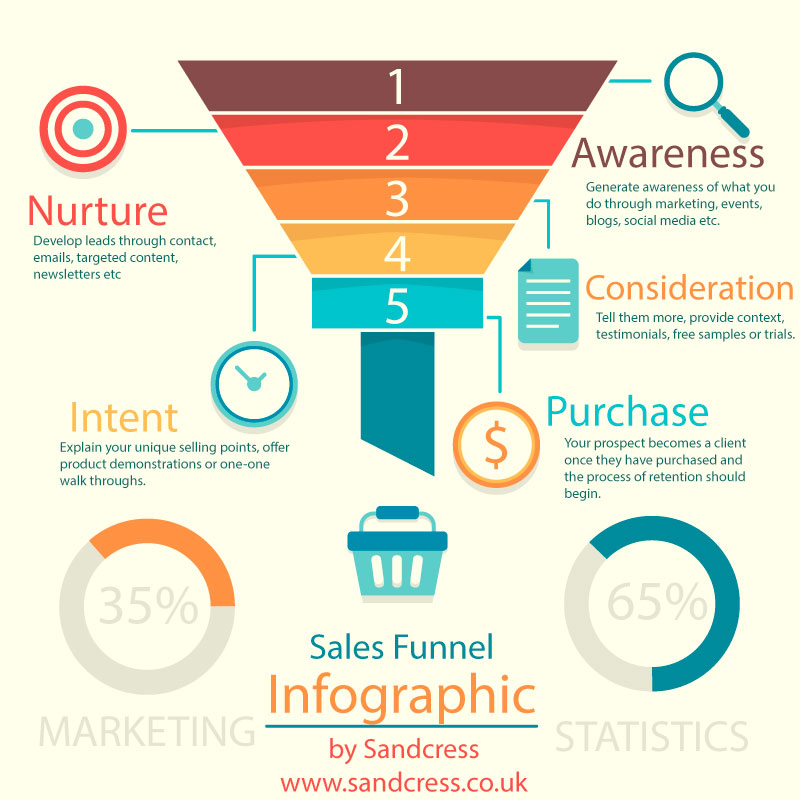I have a lot of clients who come to me having done ‘shotgun advertising’ and don’t understand why it hasn’t worked for them. Often they think that ‘Facebook advertising (replace with Google adwords/leaflets/networking/exhibitions etc) doesn’t work for their business’. Of course it’s always possible that, that is the case – not all types of marketing work for all businesses but there is something called ‘the continuum of behaviour’ and it describes the process that we all have to go through before we make the decision to ‘buy’.
Generally someone needs to see something at least 3 times before they make the decision to act on it so clever but consistent, strategic advertising is the key here. A one off Facebook advert is simply not going to get you far enough….below you’ll find a great article that explains the psychological process that we all go through to make a decision…
Full article taken from and with thanks to https://www.mtdsalestraining.com/in-house-training/sales-consulting/the-5-stages-of-the-buyers-decision-making-process-how-to-utilise-it.html
How do you make a decision? Ever thought about it?
Many of us have, and have used the facts behind decision-making in identifying how they should work with clients.
But many more haven’t studied this subject and consequently lose the ability to influence buyers in making decisions that will progress a sale and take the prospect on a journey of discovery.
Actually, most people make decisions at a deep psychological level without really identifying how the process is taking shape.
We all go through a process of making decisions without realising it, most of the time.
Just think about when you decide what to have at a restaurant, or what car you want to buy, or where you want to go on holiday.
You may think that many of your decisions are instinctive, but actually you are always going through a process, even subconsciously.
If you’re able to see what these stages are in the process, it will help you help the buyer to come to a natural conclusion, and it will answer many questions you may have as to why someone hasn’t made the decision to go with your product.
Let’s take a look at the stages and see how we can deal with them when discussing progress with a prospect:
Stage 1: Unawareness
At this point, the prospect isn’t aware of what options or choices they have. In a restaurant, they haven’t seen the menu yet.
In a sales situation, they have little idea of what your products can do for them.
If they look on-line, they are unaware of you until your marketing prowess opens their eyes.
The next stage is the obvious one:
Stage 2: Awareness
They may look on-line and checkout your website.
They may read your brochure or literature and see what it is you do.
They may get a phone call from your company.
Whatever way it happens, they now go through a series of connections that makes them aware of your product or service.
This awareness is simply that; aware of what or who you are. That has narrowed it down dramatically.
Think of the billions of people who don’t know about you (unless you work for Google or Facebook or Amazon, that is!).
This awareness is the next stage of decision-making.
Stage 3: Understanding
This starts to play at the intellectual level. In other words, they have a logical understanding of what you have to offer.
It could be anything from seeing the choice on the menu to knowing the range of offers you have to checking out the hotel amenities.
This understanding level narrows down the process, as it allows buyers to see for themselves what their business or lives would be like with your product or service.
Stage 4: Conviction
Now, emotion starts to play a role. It may look like you are very competitive price-wise, but that doesn’t convince people you are right for them.
At this point, they must be out of their comfort zone.
They must either associate pain with their current position so they need something or someone to solve their problem, or they see opportunities for the future that you are able to help them achieve.
Your solution has to be worth investing in, to solve their problems or take them on the journey to improved results.
When they see this happening, they have an emotional connection to the results and are convinced your solution will be the change they are looking for.
Stage 5: Action
If the first four steps are carried out effectively, this stage is the next logical step.
You as the sales consultant now can alleviate the fear of making this decision to take action.
If this is the area where most of your sales stall (lack of closing ability, etc), it’s probably because you haven’t built a solid foundation with the previous stages.
If everything has been done satisfactorily beforehand, the decision on behalf of the buyer to take action comes naturally.
The real danger here is in trying to make the buyer jump too quickly through the decision-making hoops.
Many salespeople will try to jump from understanding to action to quickly.
They forget that the buyer has to connect with the solution first.
Without doing that, you run the risk of creating fear in the buyer’s mind because you haven’t followed their natural pathway of making decisions.
So, try to identify where you are with each buyer on their decision-making cycle.
Be aware of the progress you need to make with each individual and, if you solidify each stage before moving on, you have a much better chance of linking in with the way they make their decisions.
Happy Selling!
Full article taken from and with thanks to https://www.mtdsalestraining.com/in-house-training/sales-consulting/the-5-stages-of-the-buyers-decision-making-process-how-to-utilise-it.html

